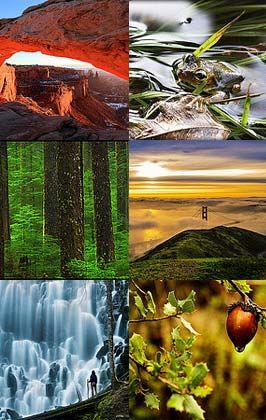Mexico is a traveler's paradise, crammed with a multitude of opposing identities: desert landscapes, snow-capped volcanoes, ancient ruins, teeming industrialized cities, time-warped colonial towns, glitzy resorts, lonely beaches and a world-class collection of flora and fauna.
Here are 7 amazing nature facts about Mexico, courtesy of Matador.com:
1. The terrain is full of mountains.
For some strange reason, people rarely associate Mexico with mountains. But note all the ranges: The Western Sierra Madre essentially considered 'the Rockies' from the U.S. and Canada extends over 1,250 km from Sonora to Nayarit. Paralleling that is the eastern Sierra Madre range which spans 1,300 km from Texas to Oaxaca. The Southern Sierra Madre reaches from Jalisco to the Isthmus of Tehuantepec in Oaxaca. Finally, the jagged sierras of Chiapas and Baja California rise up through those states as well.
2. It has miles of virgin beaches.
 |
3. Its a land full of volcanos.
The Transverse Volcanic Belt, covering 900 km of territory from Nayarit to Veracruz, has at least 22 volcanos that average 2,500 meters above sea level in altitude. At least 10 of these volcanoes are active. In addition, there are more than 10 volcanos in the Baja Peninsula only.
4. It has 10 times as many islands as Hawaii.
According to the National Commission for Biodiversity, there are 1,365 islands scattered along the coast of Mexico. They amass an area of 5,127 square kilometers, equivalent to 0.3 percent of the total national territory.
5. Mexico is not only a desert.
In most American films, Mexico appears as a desert country, full of ghost towns. However, less than 40 percent of the territory of the country is arid or semi-arid. The desert in Mexico is characterized by different types of cacti and drought-tolerant species and varies greatly in flora and fauna.
6. It is one the most biodiverse countries in the world.
Thanks to the heterogeneity of its terrain and the fact that it's between the tropics, Mexico has a great variety of ecosystems. These range from high mountain cloud forests to sea bottoms abundant in coral reefs, deserts, and coastal lagoons. The territory has about 50,000 square kilometers of humid forests equal to all of Costa Rica.
7. Throughout the landscape you find prehistoric ruins.
As the center of hundreds of Mesoamerican cultures and civilizations such as the Maya and Aztec, Mexico boasts 187 archeological sites managed by the Institute of Anthropology and History, and still others yet to be discovered. In the Yucatan Peninsula there are more ruins than budget to unearth them (excavating a pyramid can take up to 20 years.)
In short, everywhere in Mexico offers a unique travel experience. Whether your passion is throwing back margaritas on a beach, surfing the Mexican Pipeline, scrambling over Mayan ruins or exploring the jungles, Mexico extends to all a cordial invitation to discover its cultural, historical and natural diversity and richness.


